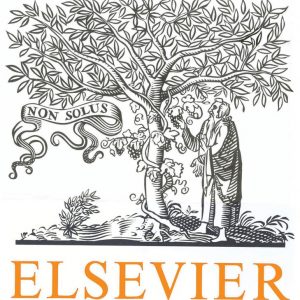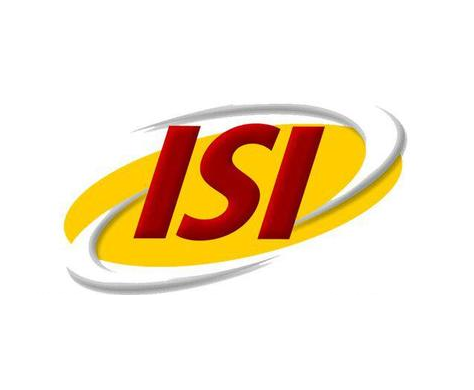دانلود رایگان مقاله لاتین تکنولوژی هوش جهانی از سایت الزویر
عنوان فارسی مقاله:
موجودات سمیوسفر: یک شخص ثالث مشکل ساز در معماری شناختی "انسان به علاوه تکنولوژی" هوش فوق العاده جهانی آینده
عنوان انگلیسی مقاله:
CREATURES OF THE SEMIOSPHERE a problematic third party in the ‘humans plus technology’ cognitive architecture of the future global superintelligence
سال انتشار :2016

برای دانلود رایگان مقاله تکنولوژی هوش جهانی اینجا کلیک نمایید.
بخشی از مقاله انگلیسی:
2. An empty niche in hunters-gatherers' eden
Genetically, we belong to Eden. If this concept denotes living among ‘trees that were pleasing to the eye and good for food’ (Bible, Genesis 2:8), we have indeed been tailored by several million years of selective pressures, which favoured those best fitted for such an environment. We feel relaxed when surrounded by greenery and upset when deprived of the sight of it (Grinde and Patil, 2009). We need to be outside and be exposed to sunlight (Holick and Chen, 2008). Our bodies are strong and graceful when we eat fruits, meat, and nuts -the huntergatherers' diet- but turn the opposite when fed with foods which require elaborate cultivation and processing (Cordain et al., 2005). As babies we want to be carried on our caregivers' bodies and wish to accompany them wherever they move (Narvaez et al., 2012). Later, we want to be free to regulate our gradual distancing from them, while we play with others (Bowlby, 2005; Karen, 1998). Indeed, we need to keep playing for all our life (Colarusso, 1994) and to have plenty of time for sleep and rest (Alvarez and Ayas, 2004; Strine and Chapman, 2005). We get ill from chronic stress (Juster et al., 2010) and continuous physical strain (Nicol et al., 1991; Yassi, 2015) but thrive on risky adventures (Heylighen, 2010) and nonroutine, intensive efforts (Heylighen, 2014b). We need to be part of a group, a band, which we can continuously depend on (Baumeister and Leary, 1995; Gardner et al., 2000) and we want to be trusted and valued by its members (Maslow, 1973). The circumstances, for which all these needs could serve as a natural, reliable compass, have been a stable reality of our ancestors' lifes for about 2 to 3 million years. Francis Heylighen (2014a) describes the human Environment of Evolutionary Adaptedness (EEA) (Bowlby, 1969; Buss, 2005), i.e. the environment for which we are evolutionarily fit, in this way: The human EEA features are those of life as hunter-gatherers in small, nomadic bands of 30-150 individuals, searching for a large variety of animal and vegetable foods, shelter, and other resources across a varied, savannah-like landscape, while avoiding dangers such as predators, poisonous plants and animals, parasites, precipices, and potentially hostile strangers. Important criteria for success in the social environment were the abilities to attract and bond with fertile and dependable mates, to raise children until they are able to stand on their own, to establish cooperative relations with reliable friends, to detect and exclude “cheaters” who abuse such social contracts, to exchange useful information with others (via language, “gossip” and story telling), and to achieve a sufficiently high status within the group.
برای دانلود رایگان مقاله تکنولوژی هوش جهانی اینجا کلیک نمایید.
کلمات کلیدی:
PDF]Abstract for Oxford.pages - WordPress.com https://positioningtheory.files.wordpress.com/2015/05/lenartowicz_repositioning.pdf loci of cognition. Emergence: Complexity & Organization 18 (2). Lenartowicz, M. (2017) Creatures of the semiosphere: A problematic third party in the “humans. Marta Lenartowicz - Google Scholar Citations scholar.google.com/citations?user=X1hQekwAAAAJ&hl=th Translate this page Vrije Universiteit Brussel, Global Brain Institute | Evolution, Complexity and Cognition group - vub.ac.be 12, 2013. Creatures of the semiosphere: A problematic third party in the “humans plus technology” cognitive architecture of the future global superintelligence. Marta Lenartowicz - Citações do Google Acadêmico - Google Scholar https://scholar.google.com/citations?user=X1hQekwAAAAJ&hl... Translate this page Vrije Universiteit Brussel, Global Brain Institute | Evolution, Complexity and Cognition group - vub.ac.be 11, 2013. Creatures of the semiosphere: A problematic third party in the “humans plus technology” cognitive architecture of the future global superintelligence. Social systems: complex adaptive loci of cognition - Semantic Scholar https://www.semanticscholar.org/.../e5c4d4f553e5732ed405a69d7256b269bc7803f7 Creatures of the Semiosphere: A problematic third party in the " humans plus technology " cognitive architecture of the future global superintelligence. 9 - Natural Genesis www.naturalgenesis.net/default.taf?_page=9&_start=97&_function=bib... Its subtitle is “A problematic third party in the humans plus technology ... not only for humans, but also for the intelligently evolving 'creatures of the semiosphere', ... Citations registered in CrossRef as of 6 May 2017. The citation count ... www.mdpi.com/citedby/10.3390%252Fijerph6092332/6 Lenartowicz, M. Creatures of the semiosphere: A problematic third party in the 'humans plus technology' cognitive architecture of the future global ...
